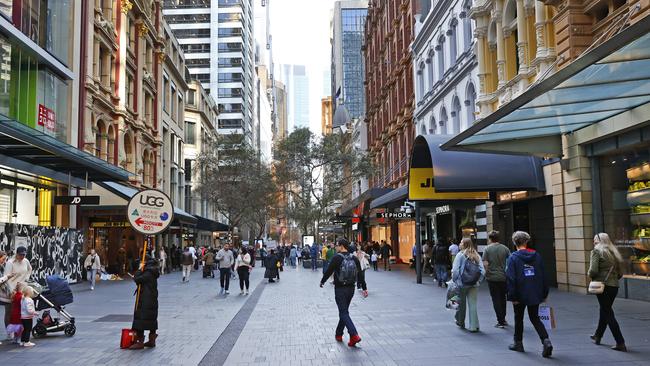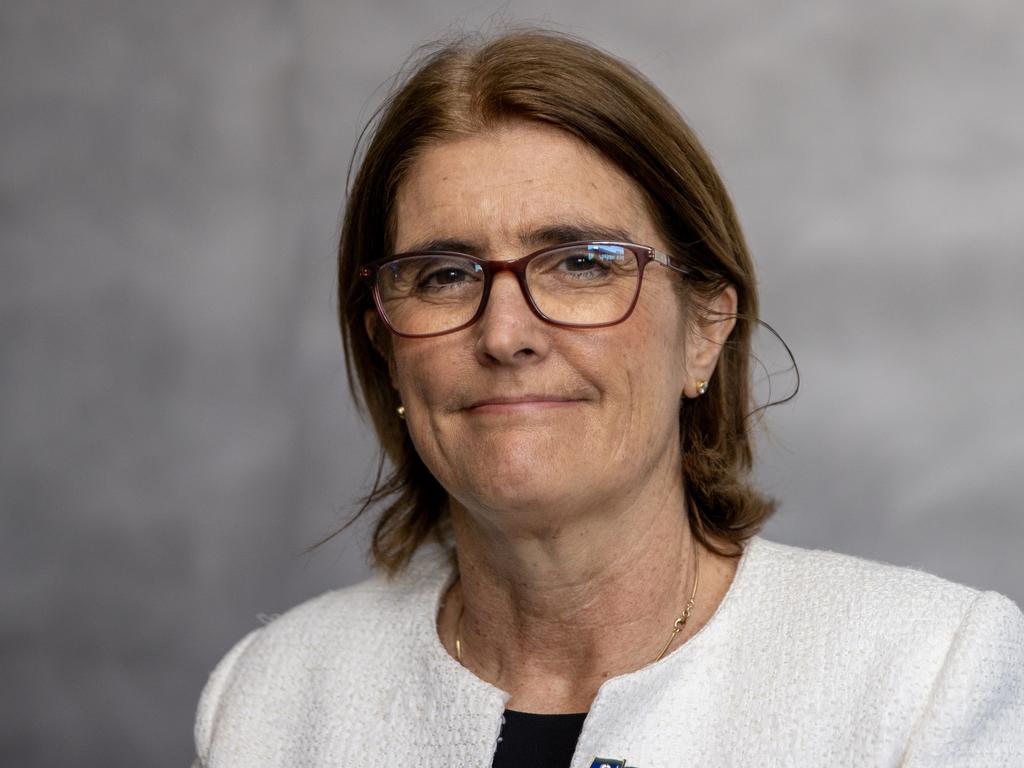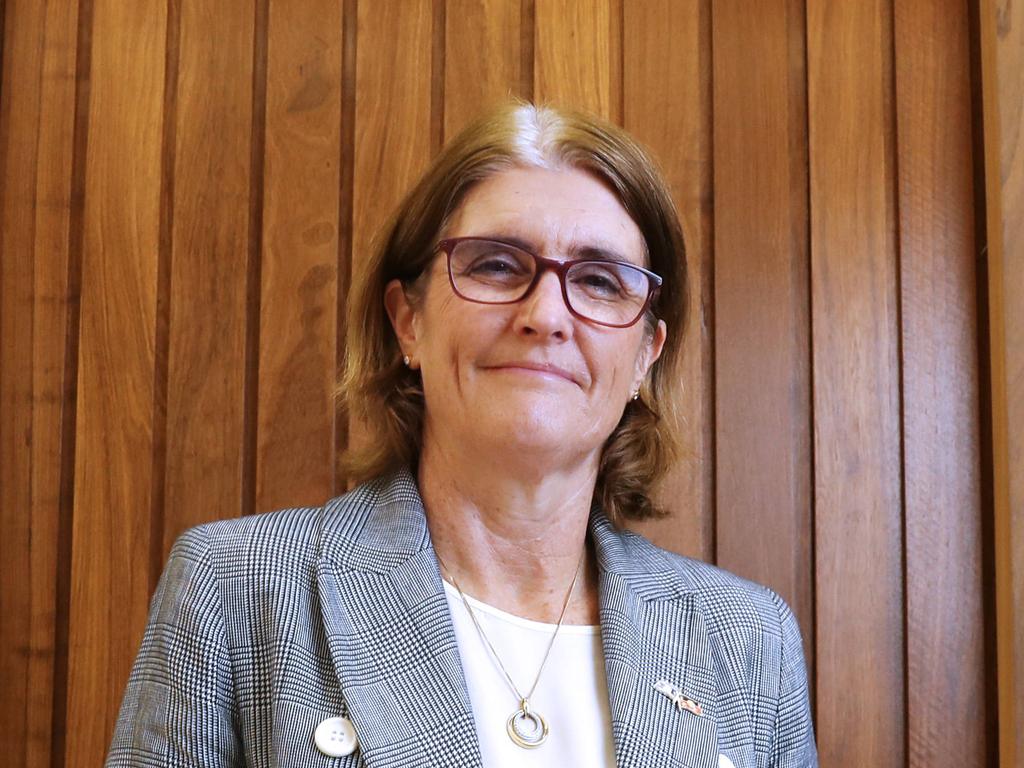Melbourne Cup rate hike looms as inflation jumps in September quarter
Mortgage holders should brace for more pain after a rapid rise in petrol prices, rent and electricity bills triggered a rise in inflation in the September quarter.

A Melbourne Cup day rate hike is now “all but guaranteed”, economists say, after surging petrol prices, rents and power bills caused inflation to accelerate in the three months to September, despite billions in government subsidies taking some of the sting out of cost-of-living pressures.
As new data showed inflation in the recent quarter jumped to 1.2 per cent, from 0.8 per cent in June, Jim Chalmers suggested there was nothing in the figures to support a rate hike on November 7. On Tuesday, RBA governor Michele Bullock said the central bank would “not hesitate” to move again on interest rates if there was a “material change” in the inflation outlook.
The Treasurer, however, said the inflation outlook remained “consistent” with May budget forecasts despite the figures coming in well above the RBA’s expectations. “The Reserve Bank looks for material changes in the inflation outlook – what we’ve seen today, and they will obviously assess these numbers in their own way – but what we’ve seen today is consistent with our expectations, it doesn’t materially change the inflation outlook,” he said.
Treasury secretary Steven Kennedy warned a worsening Middle East conflict could trigger a spike in global oil prices that would “quickly” boost inflation and lower growth.
“Recent developments in Israel are contributing to uncertainty in oil markets. With oil prices already at high levels, the potential for higher inflation and lower global and domestic growth could quickly emerge should oil prices spike and remain at high levels,” he said in Senate estimates hearings.
While quarterly inflation accelerated, the annual rate of consumer price growth cooled further, from 6 per cent in June to 5.4 per cent in September, the Australian Bureau of Statistics.
This was well down from the peak of 7.8 per cent at the end of last year, but likely not down far enough to satisfy a central bank determined to “do what it takes” to achieve its mandate by late 2025, according to analysts.
Judo Bank economic adviser Warren Hogan said the RBA had projected annual inflation would be at 5 per cent or below by September, and that its forecast of 4.1 per cent by the end of the year looked hard to achieve without a rate rise next month, and potentially another in December. Mr Hogan disputed the Treasurer’s claim that the renewed inflationary pulse was being driven by overseas developments, and in global oil markets in particular.
“Those global factors are playing a role, but the key problem for the RBA and the real risk is domestic, and that’s come through loud and clear in these figures,” he said. “The government really does need to change tack here and explain to the community why higher rates are needed to get rid of inflation, rather than trying to distance themselves from it.
“I think leadership now is about trying to make it easier for the RBA to get the job done and also explaining to people broadly what we are trying to achieve, which is getting inflation down – that’s what’s hurting out there.”
ANZ head of Australian economics Adam Boyton said he now expected the Reserve Bank would deliver a 13th rate rise to 4.35 per cent on November 7, describing the latest inflation number as “uncomfortably high”.
“While 4.35 per cent should mark the peak in the cash rate, there is a risk it could tighten beyond that,” he said, adding that rate cuts were “a very long way off”, Mr Boyton said.
EY chief economist Cherelle Murphy said “a Melbourne Cup day rate hike looks all but guaranteed”, agreeing that the pace of inflation was “now out of line with the Reserve Bank’s August forecasts”.
The ABS report showed the major drivers of inflation through the three months to September was a 7.2 per cent jump in fuel prices – the largest quarterly rise in fuel prices since March 2022 – alongside a 4.2 per cent lift in electricity costs, which would have been 18.6 per cent were it not for the joint federal-state energy bill relief.
There was also a 2.2 per cent lift in rents in the quarter, which, once again, was moderated (by 0.3 percentage points) thanks to an increase in commonwealth rent assistance.
Still, rental prices rose 7.6 per cent annually, the largest annual rise since 2009, reflecting a dire shortage of rental properties around the nation.
There was better news for families, with the ABS data showing a 3.7 per cent drop in fruit and vegetables prices in the quarter thanks to good growing conditions.
Government intervention was once again evident in the 13.2 per cent drop in child care costs, thanks to the increase in the taxpayer funded subsidy rate received by more than a million families from July 10.
ABS head of prices statistics Michelle Marquardt said “this change reduced out of pocket costs for households, more than offsetting childcare fee increases this quarter”.
“Without the changes to the subsidy, child care would have increased 6.7 per cent,” Ms Marquadt said.
The extraordinary government intervention cut half a percentage point off annual inflation, according to ABS calculations, suggesting consumer price growth would have barely budged in September without the measures.
The latest figures came just hours after Dr Kennedy warned that “in the near term, there will be volatility in headline inflation”.
“We have observed this in other countries, particularly increases in headline inflation driven by petrol, and we are likely to see similar instances in Australia,” he told parliament in Senate Estimates hearings.
“However, we still expect inflation to steadily fall towards the target band, although its descent towards the target band may be slower than initially expected due to the high petrol prices.”
Closer to home, the unexpectedly powerful boom in net migration – powered by a flood of returning international students – had boosted our services exports and added to national economic output. But there was a downside, Dr Kennedy said.
“The rapid recovery in migration is adding to pressures in the housing market. Growth in national advertised rents peaked at 9.6 per cent through the year to September ‘22. Growth has since eased to be 8.4 per cent though the year to September ‘23, but the rental market remains tight with vacancy rates remaining near record lows,” he said.







To join the conversation, please log in. Don't have an account? Register
Join the conversation, you are commenting as Logout